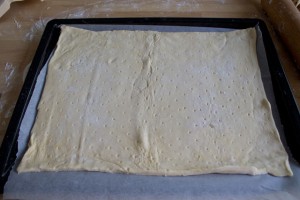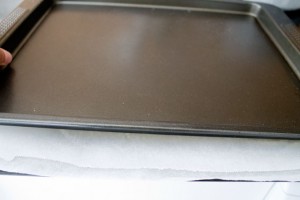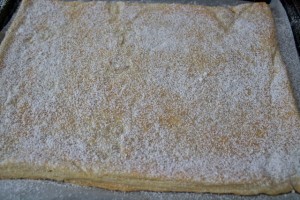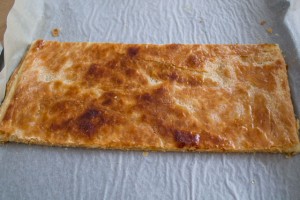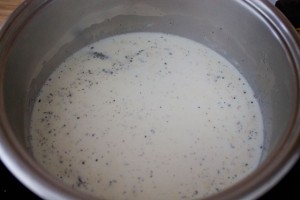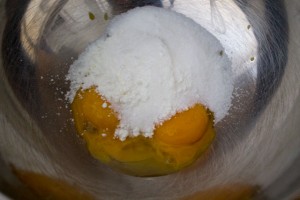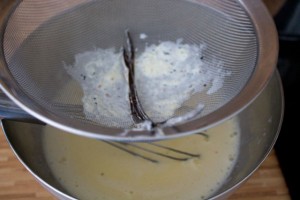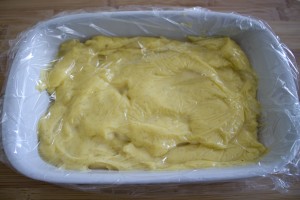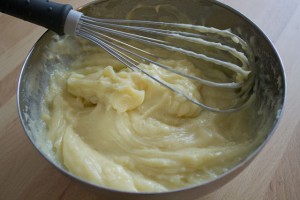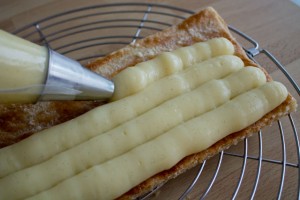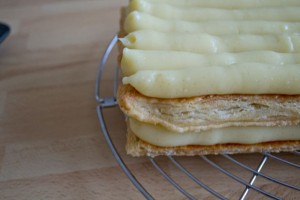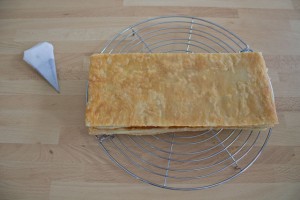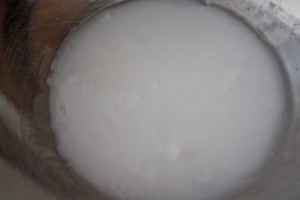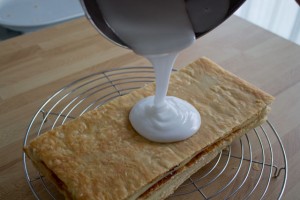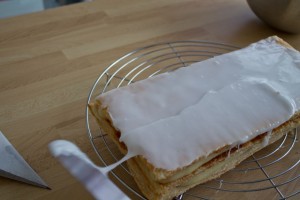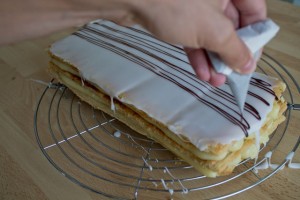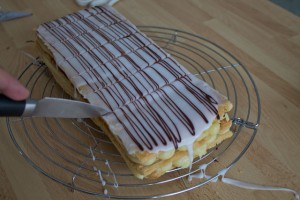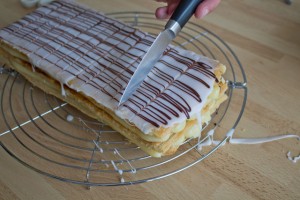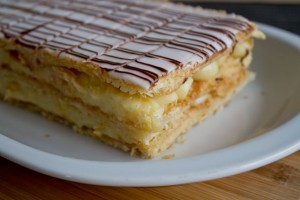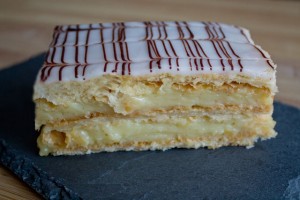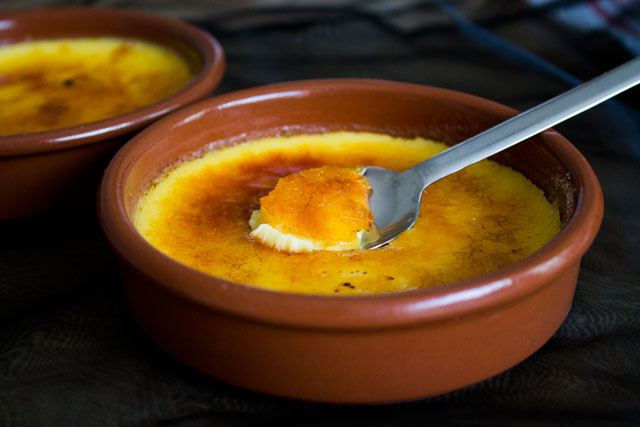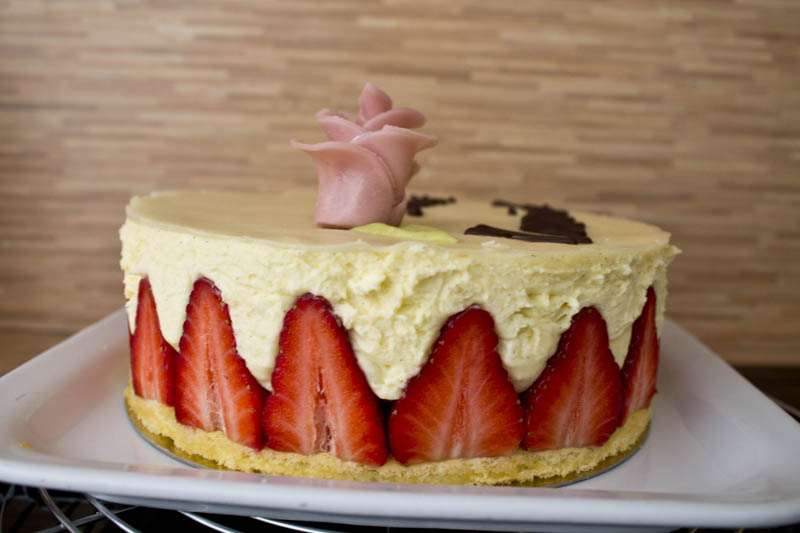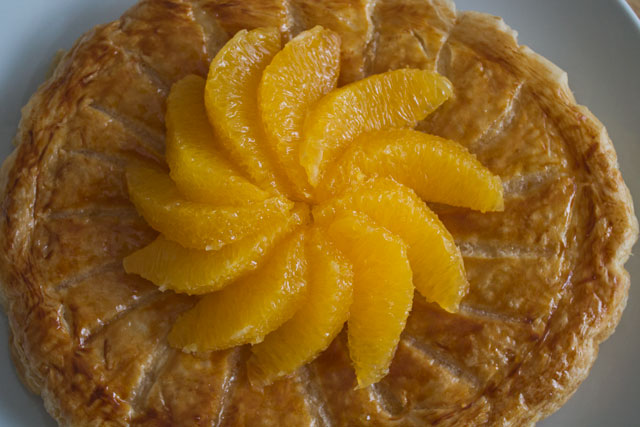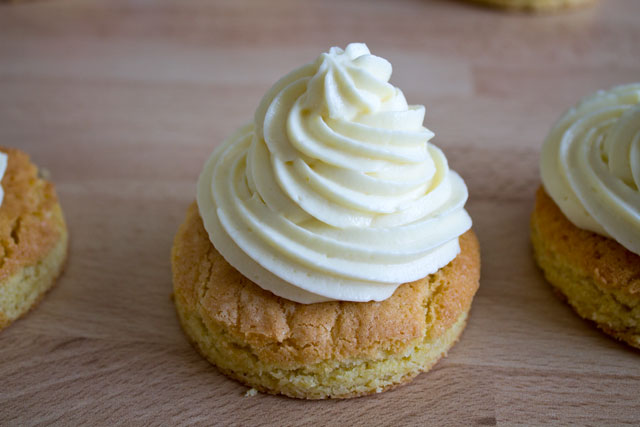Recipe: Mille-feuille (Cream Napoleon)
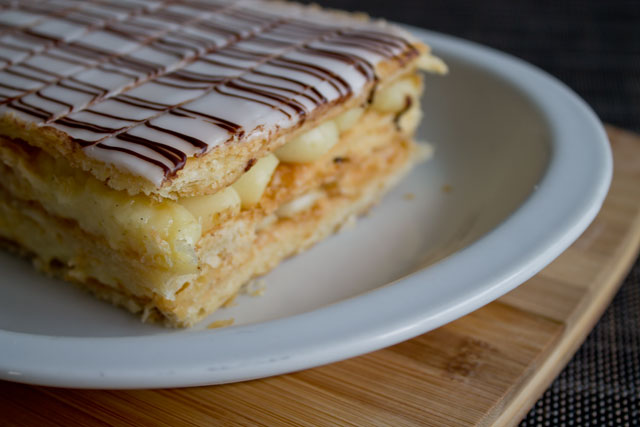
You can’t go more classical than this! The mille-feuille is a traditional French pastry that can be found in any bakery in France.
What is the mille-feuille and how is it decorated?
The mille-feuille is made of three layers of puff pastry and two layers of pastry cream.
The top layer is usually coated with a sprinkle of powdered sugar or glazed with fondant.
If glazed, the classical decoration is made with white fondant and melted chocolate strips combed in alternate directions. Working with fondant needs some practice as it dries quickly and requires speed to complete the decoration so have everything ready on your work area before glazing the cake (i.e. spatula, melted chocolate inside the parchment paper piping cone,…).
Mathematical demonstration that the mille-feuille does not contain a thousand layers (but almost!)
The French name “mille-feuille” (“a thousand leaves“) refers to the number of layers in the dough.
For this dessert, puff pastry is folded 6 times, and each fold increases the number of layers exponentially. In case you ever wondered how many actual layers there are in a mille-feuille, here is the answer:
| Fold | Layers with a simple folding | Total layers |
| 1 | 1+1+1 | 3 |
| 2 | 3+3+3 | 9 |
| 3 | 9+9+9 | 27 |
| 4 | 27+27+27 | 81 |
| 5 | 81+81+81 | 243 |
| 6 | 243+243+243 | 729 |
So now we have the proof that pastry chefs cheat! 🙂 Joking of course: there are not 1.000 layers… but almost: if properly prepared, a puff pastry with 729 layers that rise independently while baking results in an excellent, flaky and crispy product.
What is the story of the mille-feuille?
The origin of the mille-feuille is unknown: some sources refer to François Pierre De La Varenne‘s 1651 invention, later improved by the legendary Marie-Antoine Carême, and some others mention the Italian city of Naples as birthplace of this dessert.The “Neapolitan” adjective was later mangled into “Napoleon“, a name that became widespread in the 1800’s with the Napoleonic wars.
For this reason, the mille-feuille is also known as Napoleon in many countries.
Mille-feuille (Napoleon)
Ingredients
Cake layers
| 200g | Puff pastry |
| Powdered sugar (as needed) |
Pastry cream
| 600ml | Milk |
| 1/2 pinch | Salt |
| 1/2 | Vanilla bean |
| 3 | Eggs |
| 60g | Cornstarch |
| 150g | Granulated sugar |
| 100 | Glucose (or 130g more of granulated sugar) |
Glaze
| 300g | Fondant |
| 50g | Dark chocolate (chopped) |
Directions
Note
The mille-feuille can be made also with scraps of puff pastry, since the dough doesn't need a significant rise.
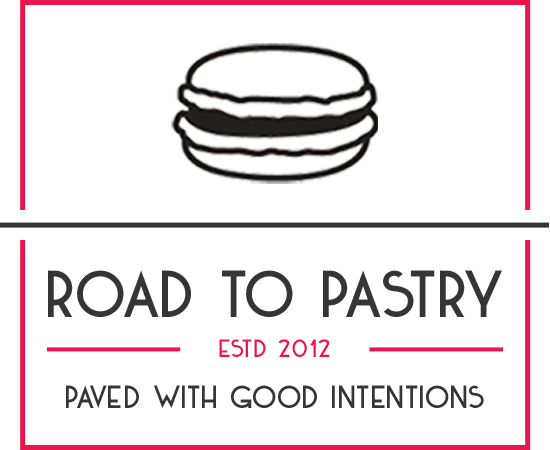
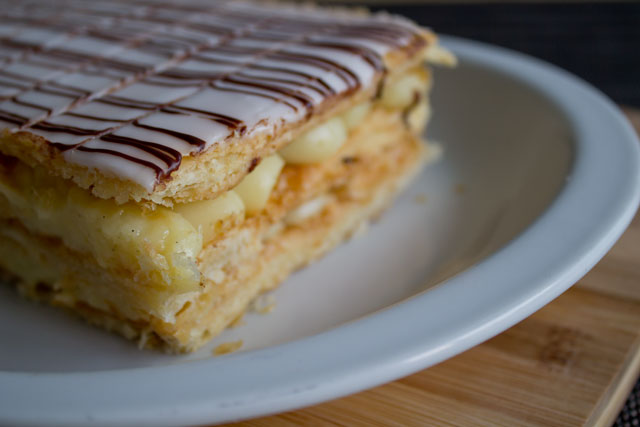
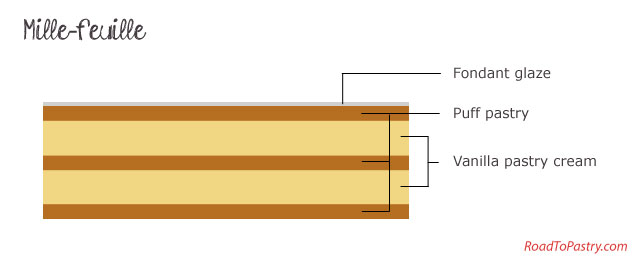
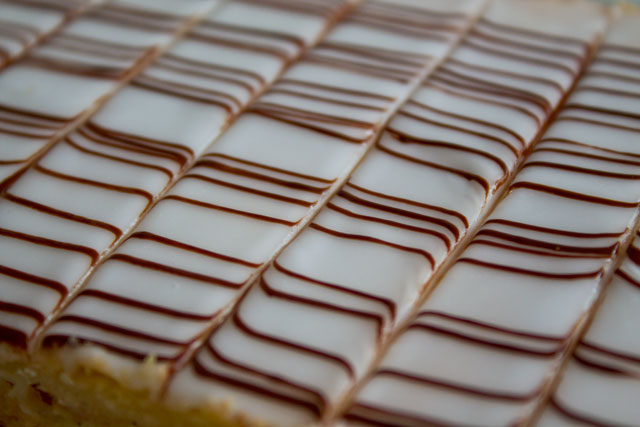
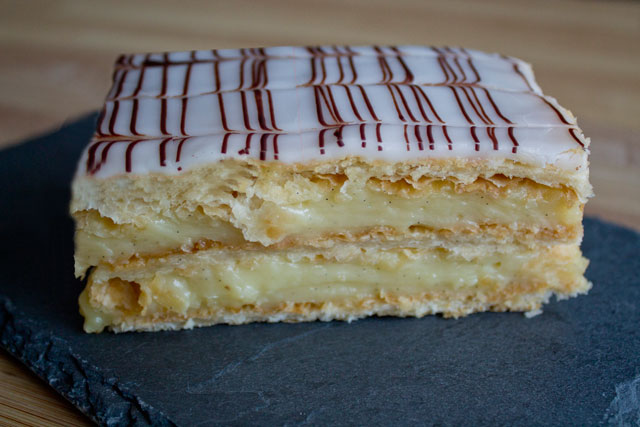
 Print recipe
Print recipe